Intense weather can certainly put a damper on your family vacation and a natural disaster could have far more severe consequences. In preparation for your coastal getaway, consider going after the storms have passed. This article will discuss all you need to know about why hurricanes occur in Cancun and when you should expect them to be over each year. So, when does hurricane season end in Cancun? Let’s find out.
Cancun
Geography
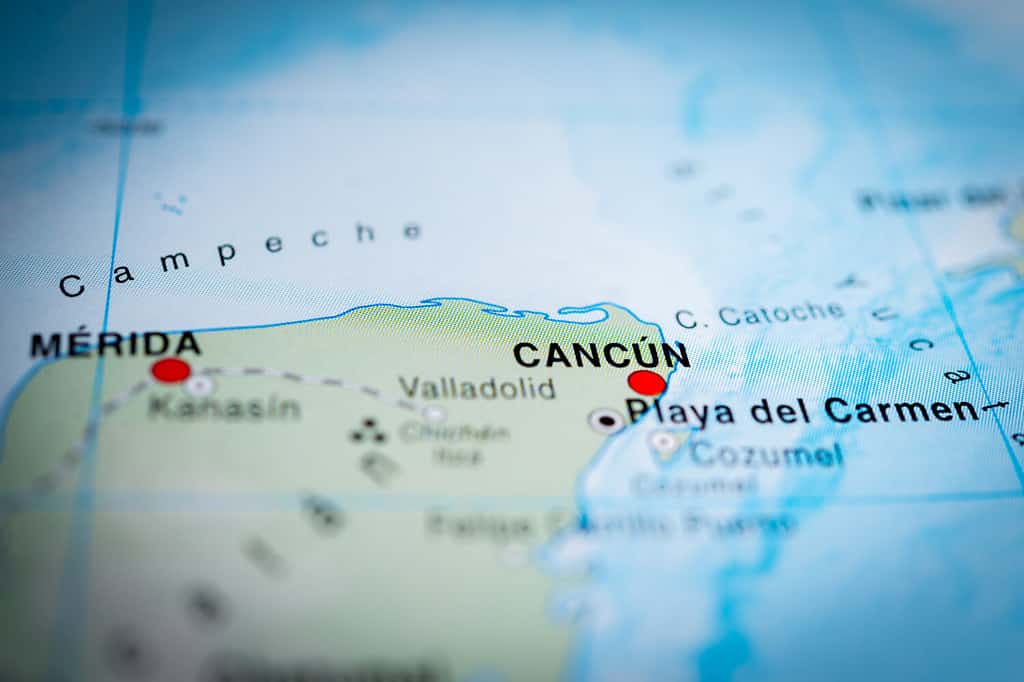
Cancun is one of many beautiful locations in the Caribbean region.
©Tudoran Andrei/Shutterstock.com
Cancun is a popular tourist destination located on the northeastern coast of the Yucatan Peninsula in Mexico. It is situated along the eastern edge of the Yucatan Peninsula, which separates the Gulf of Mexico to the west from the Caribbean Sea to the east. This location plays a vital role in shaping the region’s climate and geography. Geographically, Cancun is situated at approximately 21 degrees north latitude and 86 degrees west longitude, making it part of the broader Caribbean region.
Climate

Cancun has beautiful weather and a flourishing tourism industry in the summer.
©Jonathan Ross/iStock via Getty Images
The proximity of Cancun to both the Gulf of Mexico and the Caribbean Sea has a significant impact on its climate. The warm waters of the Caribbean Sea contribute to Cancun’s tropical climate, characterized by hot and humid conditions, especially during the summer months. These warm waters also serve as a source of energy for tropical storms and hurricanes.
Cancun’s climate is further influenced by prevailing winds. Trade winds from the east, known as the easterly trade winds, dominate the atmospheric circulation in the Caribbean. These trade winds help regulate the region’s temperature and contribute to the development of tropical weather systems, including hurricanes. Overall, the geography of Cancun, with its coastal location and proximity to warm bodies of water, creates the ideal conditions for a tropical climate with susceptibility to intense storms.
Hurricanes
Hurricanes, also known as cyclones or typhoons in different parts of the world, are powerful tropical storms characterized by strong winds, heavy rain, and low-pressure systems. These immense weather phenomena can cause widespread destruction and pose significant threats to human populations and the environment. Understanding the meteorology behind hurricanes is crucial for predicting their formation and behavior.
Hurricane Formation

The center of a hurricane is the “eye”.
©Evgeniyqw/Shutterstock.com
Hurricanes typically form over warm ocean waters, where sea surface temperatures are at least 26 degrees Celsius (79 degrees Fahrenheit) or higher. Warm ocean water provides the necessary heat and moisture for the development of a hurricane. As the warm, moist air at the surface rises, it creates a low-pressure area. When this air begins to spiral and rotate due to the Earth’s rotation (Coriolis effect), it forms a tropical depression. If the depression’s winds intensify and reach sustained speeds of at least 74 miles per hour (119 kilometers per hour), it is classified as a hurricane.
Hurricane Grading
Hurricanes are graded according to the Saffir-Simpson Hurricane Wind Scale, which classifies them into five categories based on their sustained wind speeds:
- Category 1: 74-95 mph (119-153 km/h)
- Category 2: 96-110 mph (154-177 km/h)
- Category 3: 111-129 mph (178-208 km/h)
- Category 4: 130-156 mph (209-251 km/h)
- Category 5: 157 mph or higher (252 km/h or higher)
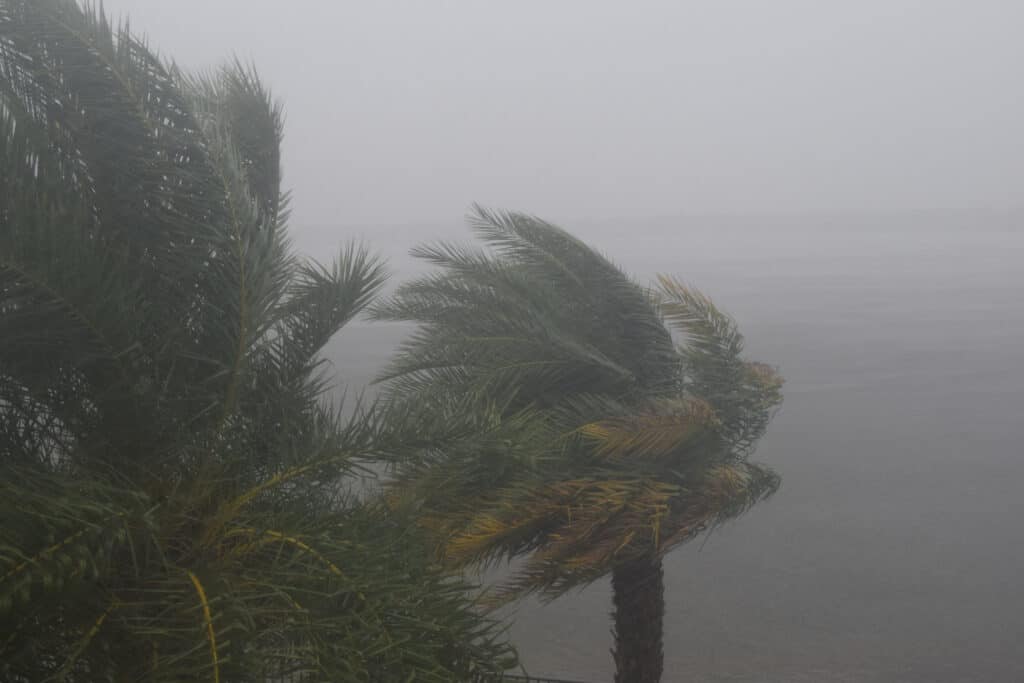
The Atlantic Gulf hurricane was a category 3 storm that devastated the Gulf of Mexico in September 1919. The storm was massive and slow-moving.
©LouiesWorld1/Shutterstock.com
These categories provide an indication of a hurricane’s potential for damage. Category 1 hurricanes may cause minimal damage, while Category 5 hurricanes are extremely destructive with the potential to devastate entire regions.
Dissipation
Hurricanes dissipate or weaken as they move over cooler ocean waters, interact with landmasses, or experience increased wind shear (changes in wind speed and direction with altitude). When a hurricane moves over land, it loses its warm water energy source, causing it to gradually lose strength. As the storm weakens, its winds decrease, and it can transition into a post-tropical cyclone or extratropical cyclone, becoming a less intense storm system. The process of dissipation may take several days, and the storm can still bring heavy rainfall and strong winds as it transitions and moves away from its point of origin.
Hurricane Season
When Does Hurricane Season Begin in Cancun?
Hurricane season in Cancun officially begins on June 1st each year. However, the most active and critical period during this season usually spans from mid-August through October. During this time frame, hurricane activity in the Atlantic basin, which includes the Gulf of Mexico and the Caribbean Sea, tends to peak.
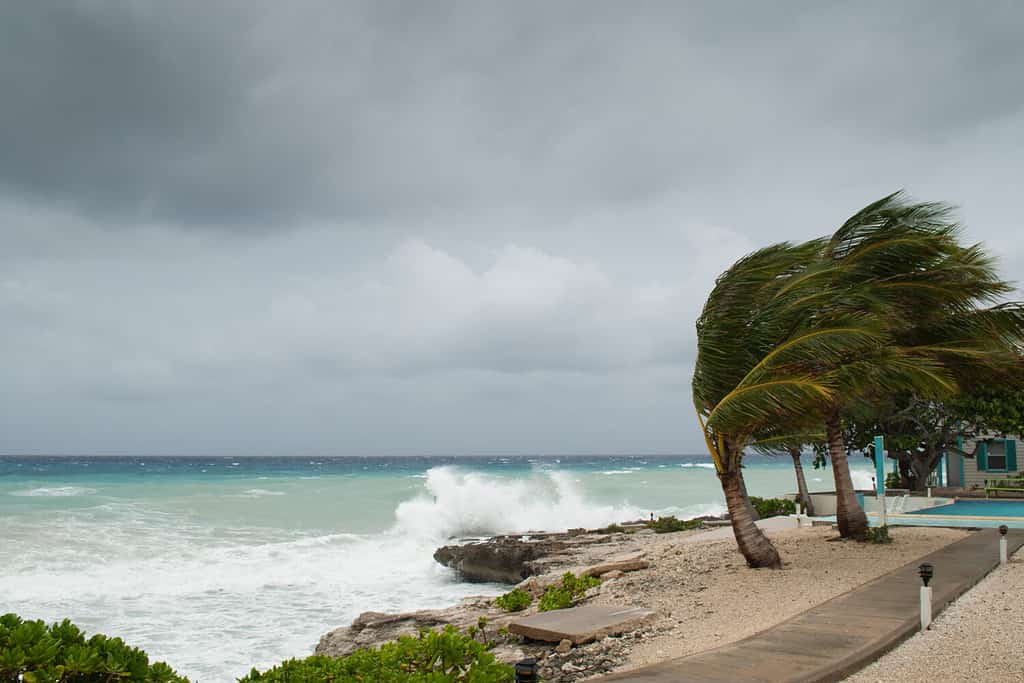
Tumultuous waters and large waves usually precede hurricanes.
©Drew McArthur/Shutterstock.com
As hurricane season approaches in Cancun, there are several notable weather changes and patterns. In the months leading up to the peak of hurricane season, the region experiences increasingly warm and humid conditions. Sea surface temperatures in the Caribbean Sea rise, providing the necessary fuel for the development of tropical storms and hurricanes. The atmosphere becomes more unstable, with greater moisture and heat, making it conducive for storm formation.
As the peak of hurricane season approaches, the region may experience more frequent and intense thunderstorms and rain showers. These storms often bring heavy rainfall and the potential for localized flooding. Additionally, the atmospheric conditions during this period are more favorable for the development of tropical disturbances into tropical storms and hurricanes. It’s during this time that meteorologists closely monitor weather systems in the Atlantic to provide early warnings and track the potential paths of developing storms.
When Does Hurricane Season End In Cancun?
Hurricane season in Cancun officially ends on November 30th each year. While the season officially concludes at the end of November, it’s important to note that the risk of hurricanes and tropical storms diminishes significantly as the season progresses beyond its peak in late summer and early fall.
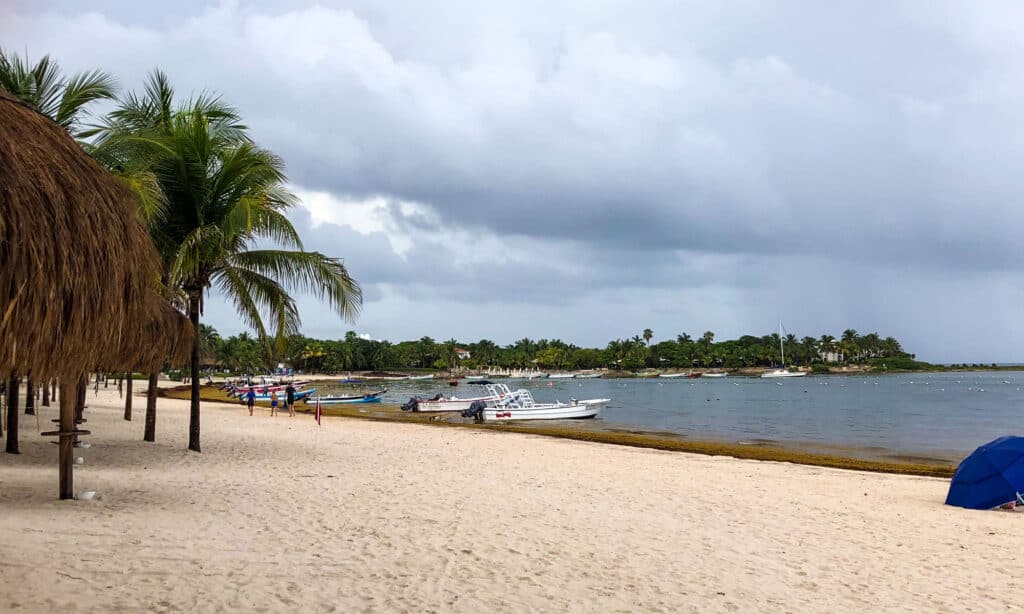
Cancun weather is often very pleasant in November and December, like here at Akumal Beach.
©iStock.com/Jorge Ramirez Corona
The post-hurricane season period in Cancun is characterized by more pleasant weather conditions. Days become sunnier, and rainfall becomes less frequent and intense. Humidity levels decrease, leading to more comfortable and enjoyable outdoor activities. The cooler waters also reduce the likelihood of tropical disturbances developing into storms, contributing to the overall decrease in tropical cyclone activity.
Overall, the period after the official end of hurricane season in Cancun is marked by milder and more stable weather, making it an attractive time for tourists to visit the region without the heightened risk of hurricane-related disruptions.
Late-Season Hurricanes
Because hurricane season typically peaks in October, hurricanes as late as November in Cancun are very rare. Here are three notable hurricanes that occurred late in the hurricane season near Cancun.
#1 Hurricane Wilma (October-November 2005)
Hurricane Wilma, one of the most powerful hurricanes on record, formed on October 15, 2005, in the western Caribbean Sea. It quickly intensified and moved westward towards the Yucatan Peninsula. Wilma’s duration as a hurricane was notable, lasting for an astonishing 13 days before finally dissipating on November 4, 2005.

Hurricane Wilma caused significant damage in countries near the Caribbean Sea and parts of the United States.
©Samuel Acosta/Shutterstock.com
This tremendous storm reached its peak intensity on October 19, 2005, with maximum sustained winds reaching an astonishing 185 miles per hour (298 kilometers per hour). It held this Category 5 intensity for several days, making it one of the strongest hurricanes ever recorded in the Atlantic basin.
On October 21, 2005, Hurricane Wilma made landfall on the northeastern coast of the Yucatan Peninsula, very close to Cancun. At the time of landfall, Wilma was a Category 4 hurricane with sustained winds of around 150 miles per hour (241 kilometers per hour). Its slow movement and extended duration over the region resulted in a prolonged and devastating impact on Cancun and the surrounding areas.
The hurricane brought catastrophic destruction to Cancun and the Riviera Maya. The powerful winds, heavy rainfall, and storm surge caused widespread damage to buildings, infrastructure, and the tourism industry, which is a vital part of the region’s economy. Many hotels and resorts were severely damaged, and streets were flooded. The hurricane disrupted power and communication networks, leaving thousands of residents and tourists without basic services.
Recovery efforts after Hurricane Wilma were extensive, taking months to fully restore the region’s infrastructure and tourism facilities. Officially, there were 52 fatalities. While the devastation was significant, Cancun and the surrounding areas have since rebuilt and recovered, demonstrating resilience in the face of such a powerful natural disaster.
#2 Hurricane Michelle (October-November 2001)
Hurricane Michelle was a powerful hurricane that formed during the 2001 Atlantic hurricane season. It originated on October 29, 2001, in the western Caribbean Sea and rapidly intensified over the following days. Michelle’s duration as a hurricane was relatively short, lasting about a week. It ended on November 6, 2001. It followed a complex path, affecting several areas in the Caribbean.

The high wind speeds during hurricanes can cause various debris, even trees, to become airborne hazards.
©Aleksandr Rybalko/Shutterstock.com
Hurricane Michelle reached its peak intensity on November 3, 2001, with maximum sustained winds reaching 140 miles per hour (225 kilometers per hour). At its peak, Michelle was classified as a Category 4 hurricane on the Saffir-Simpson Hurricane Wind Scale.
Hurricane Michelle did not make a direct landfall in Cancun or the Yucatan Peninsula. However, it did bring heavy rainfall and strong winds to parts of the region. The hurricane’s outer bands affected Cancun and other areas along the northeastern coast of the Yucatan Peninsula.
While the hurricane’s impact on Cancun was not as devastating as it was in some other areas, the heavy rains and gusty winds led to localized flooding and minor damage to infrastructure. The region experienced some disruption, particularly in terms of transportation and power outages, but the level of destruction in Cancun itself was relatively limited compared to other locations in the Caribbean.
#3 Hurricane Paloma (November 2008)
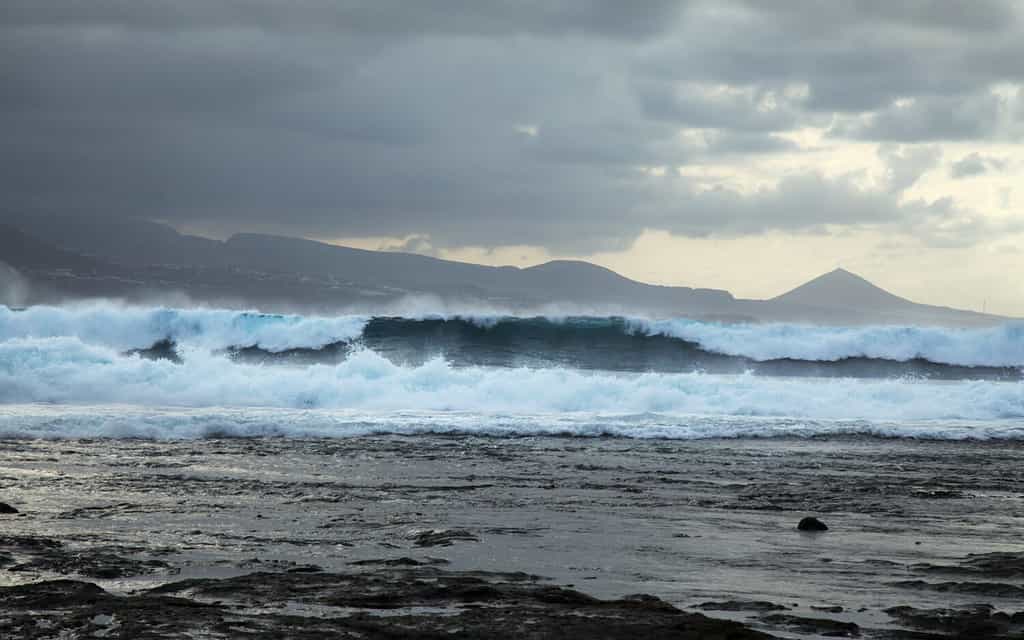
Because of powerful waves and intense winds, coastal areas are especially vulnerable during hurricanes.
©Tamara Kulikova/Shutterstock.com
Hurricane Paloma was a powerful late-season hurricane that formed in the western Caribbean Sea. It did not occur in Cancun but is a significant late-season hurricane in proximity to Cancun. While Cancun was not devastated by Hurricane Paloma, the storm had a substantial impact on eastern Cuba. Paloma brought strong winds, heavy rainfall, and a storm surge to the region. The hurricane caused widespread damage to homes, infrastructure, and agriculture in parts of Cuba.
It originated on November 5, 2008, quite late in the season, and it intensified rapidly over the following days. Paloma’s duration was less than a week, concluding on November 14, 2008, which is remarkably late in the season. It made landfall in Cuba before dissipating over the western Atlantic.
Hurricane Paloma reached its peak intensity on November 7, 2008, with maximum sustained winds reaching 145 miles per hour (233 kilometers per hour). At its peak, Paloma was classified as a Category 4 hurricane on the Saffir-Simpson Hurricane Wind Scale.
The photo featured at the top of this post is © Everett Collection/Shutterstock.com
Thank you for reading! Have some feedback for us? Contact the AZ Animals editorial team.






